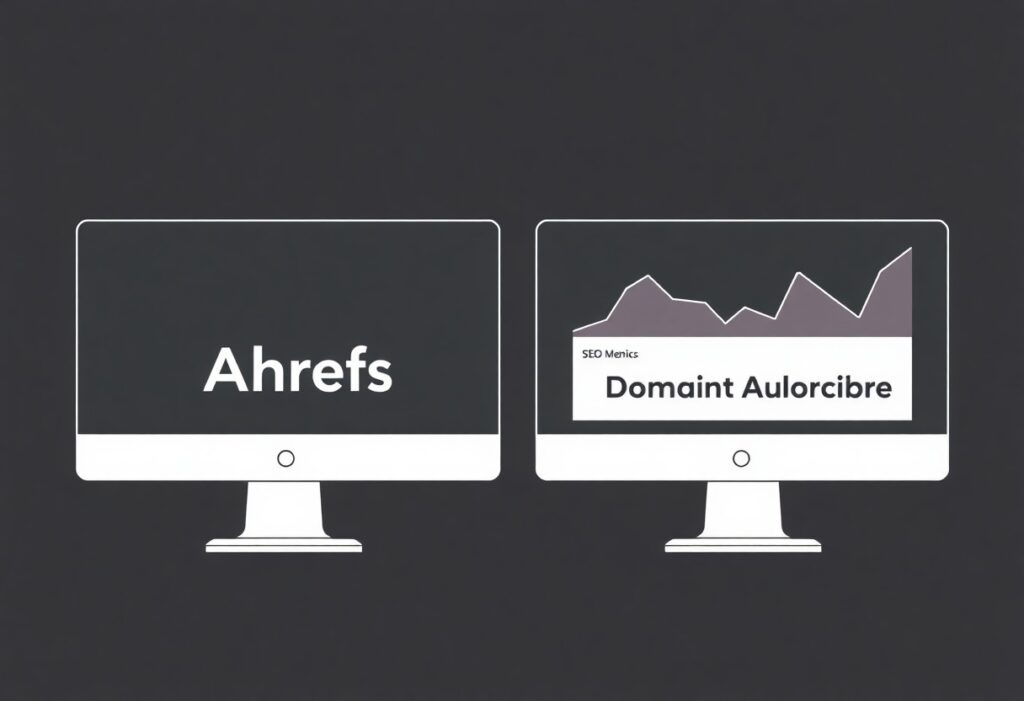H2 & H3 Tags in Keywords can boost your website’s visibility by helping search engines understand your content and improve rankings. However, poor implementation may lead to over-optimization. Balancing relevance and readability while maintaining SEO best practices is key. At Rank Authority, we use AI-driven strategies to help businesses optimize content efficiently. In this guide, you’ll learn how to strategically place keywords in subheadings for better ranking. Additionally, using them naturally enhances user experience. Let’s explore how to effectively use keywords in H2 & H3 tags to maximize visibility.

Understanding H2 & H3 Tags
The structure of your content plays a significant role in SEO, and using Keywords in H2 & H3 Tags effectively enhances readability and ranking. These header tags organize your content, making it easier for both search engines and users to navigate. Additionally, H2 tags highlight key sections, while H3 tags break down subtopics for better clarity. When implemented correctly, these tags improve the logical flow and boost keyword relevance. Rank Authority leverages AI-driven strategies to optimize headers, ensuring your content ranks higher. As a result, search engines better understand your page, improving your chances of appearing in top results.
The Role of Header Tags in SEO
The importance of Keywords in H2 & H3 Tags in SEO cannot be overlooked, as header tags help search engines determine content relevance. Additionally, these tags break down information, making it more digestible for readers. Moreover, well-structured headers improve keyword placement, increasing the likelihood of ranking higher. Rank Authority emphasizes structured content, utilizing AI to ensure proper keyword distribution within headers. When your content is well-organized, visitors stay engaged longer, which lowers bounce rates. Therefore, proper use of header tags enhances both SEO and user experience, maximizing visibility while maintaining clear content hierarchy on your site.
Differences Between H2 and H3 Tags
Between H2 and H3 tags, the distinction lies in their hierarchy and purpose. H2 tags serve as main section headings, emphasizing core topics, while H3 tags structure subtopics within those sections. Furthermore, optimizing Keywords in H2 & H3 Tags correctly ensures better readability and ranking potential. When used strategically, these tags enhance content flow, making it easier for search engines to interpret. Additionally, Rank Authority’s AI-driven SEO techniques help businesses structure their headers effectively. Consequently, maintaining a proper hierarchy improves both user engagement and search performance, giving your content a competitive edge in rankings.
For instance, when writing a blog about SEO strategies, you would use an H2 tag for “On-Page Optimization Techniques” and an H3 tag for “Using Header Tags Correctly.” This structure clarifies different aspects while integrating Keywords in H2 & H3 Tags naturally. Additionally, search engines rely on this hierarchy to assess content relevance, improving indexing accuracy. Rank Authority’s AI tools analyze header usage, ensuring seamless keyword integration for maximum SEO benefits. Therefore, by maintaining a well-defined header structure, you enhance both search performance and user experience, increasing the likelihood of ranking higher.
Keyword Placement in H2 & H3 Tags
If you want to improve your website’s SEO, using Keywords in H2 & H3 Tags effectively is crucial. These header tags structure your content, making it easier for search engines to understand your page. When placing keywords, ensure they fit naturally within your subheadings. Otherwise, it can appear spammy. Additionally, including relevant keywords in headers helps improve readability for users. To boost your rankings, keep your headers clear, concise, and strategic. At Rank Authority, we use AI-driven solutions to refine keyword placement, helping you climb search engine rankings efficiently.
Why Keywords Matter in Headers
Around 70% of search engine algorithms focus on structured content, which makes Keywords in H2 & H3 Tags highly effective for SEO. Search engines scan headers to determine topic relevance, so well-placed keywords improve rankings. Additionally, users often skim through content, making well-optimized headers more engaging. Search engines favor structured content because it enhances user experience. Plus, relevant keywords in headers help users find the information they need quickly. With Rank Authority’s AI-powered tools, you can maximize keyword impact to stay ahead of your competition.
Best Practices for Keyword Usage
To optimize Keywords in H2 & H3 Tags, you should use them naturally while maintaining readability. Overloading headers with exact-match keywords can trigger penalties, so balance is crucial. Instead of forcing keywords, integrate variations that align with user intent. Incorporating long-tail keywords in H2s improves visibility, while H3s can support subtopics. Additionally, maintaining a logical hierarchy ensures both users and search engines understand your content structure. AI solutions from Rank Authority help businesses refine keyword strategies to enhance ranking performance.
Headers play a critical role in structuring content, making them a powerful SEO tool when used correctly. Avoid stuffing Keywords in H2 & H3 Tags unnaturally, as it disrupts readability and decreases user engagement. Instead, adopt a strategic approach by using variations that feel organic within the content’s flow. Additionally, including question-based headers can improve search visibility, especially for voice searches. Your goal should always be to enhance the user experience while leveraging SEO benefits. When done right, keyword-rich headers help you establish authority in your industry, ultimately improving search rankings.

Avoiding Keyword Stuffing – H2 & H3 Tags
Some website owners overload their content with keywords in H2 & H3 tags, thinking it will boost rankings. However, keyword stuffing hurts SEO rather than improving it. Search engines penalize content that appears unnatural or forced. Instead, you should blend keywords seamlessly into headings, ensuring they add value. Rank Authority recommends keeping your headings readable, engaging, and informative. Maintaining balance is key—your keywords should fit organically within your H2 and H3 tags. By doing so, you improve both search relevance and user experience. Using AI-driven insights, Rank Authority helps businesses avoid keyword stuffing and craft an SEO-friendly content strategy.
Natural Integration of Keywords
About naturally incorporating keywords in H2 & H3 tags, the goal is clear—enhance SEO while keeping readability intact. When structuring headings, don’t force terms into places where they don’t belong. Instead, think about how users search and indirectly phrase your tags to match their queries. Rank Authority’s AI-driven approach ensures that your headings sound natural and engaging while maintaining SEO efficiency. Keyword-rich headings that flow well make your content authoritative and appealing. Additionally, varied phrasing reduces redundancy and keeps your writing fresh. Search engines favor content that reads smoothly, so integrating keywords naturally is a smart long-term strategy.
Ensuring Readability and User Experience
On optimizing keywords in H2 & H3 tags, readability and user experience should be top priorities. Even well-placed keywords won’t help if your headings seem awkward or forced. Readers should quickly grasp the intent of your content without struggling through unnatural phrasing. AI-powered SEO strategies, like those from Rank Authority, help you refine your headings for clarity and engagement. Structured, well-worded headings not only assist search rankings but also keep visitors on your page longer. The longer they stay, the higher the chance of conversions. So, always aim for readability when optimizing headings.
In fact, search engines recognize when a website prioritizes user experience over forced optimization. A well-structured page, featuring headings that naturally include keywords without overloading them, ranks higher over time. Furthermore, visitors trust and engage with content that feels professionally written rather than stuffed with repetitive keywords. Rank Authority leverages AI-powered tools to analyze and refine content for readability and SEO strength. By keeping your keywords in H2 & H3 tags well-balanced, you enhance page usability and search rankings simultaneously. Ultimately, great SEO makes content enjoyable for both users and search engines.

Optimizing Headers for Featured Snippets – H2 & H3 Tags
After implementing Keywords in H2 & H3 Tags, you need to optimize headers to improve your chances of landing in featured snippets. Featured snippets pull direct answers from well-structured content, meaning clear and keyword-driven headers boost visibility. Use concise questions or direct statements in H2s, followed by detailed, yet scannable, responses in H3s. This approach not only attracts more clicks but also increases dwell time, reinforcing Rank Authority’s AI-driven SEO strategies. Additionally, organizing content with structured headers signals relevance to search engines, increasing your likelihood of ranking at the top.
Structuring Content for Better Visibility
Against the competition, a well-structured content strategy with Keywords in H2 & H3 Tags positions your website ahead. Search engines scan headers to determine the hierarchy of information, so leveraging clear H2s with supporting H3s improves readability and SEO ranking. Additionally, using question-based H2s encourages search engines to pull answers for snippets. Keep responses concise, structured, and valuable to your readers. Rank Authority’s AI solutions analyze top-ranking content, helping you refine these techniques efficiently. Proper structuring not only enhances visibility but also strengthens user engagement.
Enhancing Content with Semantic Keywords
About using Keywords in H2 & H3 Tags, incorporating semantic keywords improves content relevance and search engine comprehension. Google’s algorithms evaluate surrounding terms to assess context, so adding related phrases within headers makes your content more authoritative. Instead of keyword stuffing, integrate variations naturally into H3s to create a more informative experience. Rank Authority’s AI tools identify high-performing semantic terms, ensuring your content aligns with search intent. This method enhances rankings while making your content more valuable for readers.
But without semantic keywords in your H2 & H3 tags, search engines might not fully understand your content’s relevance. Instead of solely relying on exact-match keywords, use topic-related terms to build a comprehensive answer. For example, if your primary keyword is “SEO strategies,” integrating variations like “search engine optimization techniques” and “ranking improvements” helps broaden reach. Additionally, this assists in voice search optimization, as queries often use natural language. Rank Authority’s AI-driven insights help you find the best semantic keywords, ensuring your content ranks higher while staying user-friendly.
Common Mistakes to Avoid
All too often, marketers misuse Keywords in H2 & H3 Tags, which can hurt search rankings instead of boosting them. To improve SEO, you need to apply keywords strategically. While using keywords is beneficial, placing too many or ignoring hierarchy can lead to poor readability. Moreover, search engines prioritize well-structured content, so disorganized headers negatively impact your ranking. At Rank Authority, we understand how to optimize headers effectively. By avoiding these common errors, you enhance readability while keeping search engines happy. So, let’s explore these mistakes and learn how to implement proper header usage.
Overloading Headers with Keywords
With Keywords in H2 & H3 Tags, you might think stuffing as many as possible will improve SEO. However, this approach can backfire. Search engines recognize unnatural keyword usage, leading to potential ranking penalties. Instead of repetitive keyword stuffing, prioritize relevancy and readability. Your headers should guide readers while signaling topic importance. Additionally, redundant keywords make content seem robotic rather than engaging. A well-balanced keyword approach improves user experience and SEO. Rank Authority uses AI-driven strategies to perfect header optimization while ensuring compliance with search engine guidelines. Therefore, always aim for clear, natural keyword placement.
Ignoring Header Hierarchy
Below improperly structured Keywords in H2 & H3 Tags, your content might appear disorganized and confusing. Headers should follow a logical order, with H2 introducing main sections and H3 supporting subtopics. When you mix header levels incorrectly, search engines struggle to understand content flow. As a result, this reduces authority and impacts rankings. Proper hierarchy improves readability, guiding visitors through your topic efficiently. Rank Authority ensures structured content so it ranks higher and engages users effectively. Thus, keeping a well-organized approach benefits both SEO and your audience.
Considering search engines analyze content structure, disorganization can negatively affect indexing. If you place H3 headers before H2s or randomly insert keyword-heavy headings, rankings may drop. Search engines prefer structured, easy-to-follow content, meaning your headers should align logically. When visitors quickly navigate sections, they engage longer, reducing bounce rates. Moreover, clear hierarchies assist accessibility tools, improving usability for all readers. Rank Authority specializes in AI-based optimization, ensuring content flows naturally. Ultimately, aligning your headers properly enhances SEO, making your site more authoritative and user-friendly.
Measuring the Impact of H2 & H3 Tags in Keyword Optimization
Keep tracking the performance of your Keywords in H2 & H3 Tags to ensure they drive results. Consistently analyzing engagement metrics, rankings, and traffic allows you to refine your approach. Without data, you won’t know what’s working. At Rank Authority, we emphasize measuring performance to make informed decisions. Furthermore, evaluating user interactions helps identify strong and weak areas. Whether your goal is higher rankings or better conversions, keyword optimization should evolve over time. Through data-backed strategies, you can adjust placement and density to maximize impact.
Tools to Track Performance
Below are several tools that assist in measuring your Keywords in H2 & H3 Tags. Google Analytics tracks traffic fluctuations, while Google Search Console shows search performance. Additionally, SEO tools like Ahrefs and SEMrush provide insights into keyword rankings and competition analysis. By leveraging these platforms, you gain visibility into your strategy’s effectiveness. Moreover, tracking user engagement metrics helps fine-tune content adjustments. At Rank Authority, we rely on smart AI-driven solutions to help businesses monitor performance efficiently. Ensuring that your keywords contribute to higher engagement leads to better organic search results.
Adjusting Strategy Based on Data
Above all, analyzing collected data allows you to refine your Keywords in H2 & H3 Tags. If rankings plateau or decline, adjustments might be necessary. Changing keyword placement or modifying the wording can yield better results. Likewise, tweaking headers to align with search intent often improves visibility. Data-driven modifications ensure that your content stays relevant. Rank Authority uses AI to tailor optimization strategies for business success. Adapting based on performance metrics keeps your content competitive. Implementing changes strategically helps maintain search engine rankings.
Hence, using collected insights to refine your approach guarantees continuous improvement. A pattern of low engagement suggests the need for core revisions. Swapping underperforming keywords for stronger ones can enhance your ranking potential. Furthermore, search trends shift, requiring dynamic updates to maintain relevance. AI-driven tools, like those offered by Rank Authority, simplify advanced data analysis. Maintaining an adaptable strategy ensures your content follows evolving algorithm requirements. By consistently evaluating performance, you can optimize your Keywords in H2 & H3 Tags for lasting success.
Final Words
Taking this into account, using Keywords in H2 & H3 Tags effectively enhances both SEO and user experience. Not only do these tags structure your content, but they also signal relevance to search engines. Additionally, by naturally integrating these keywords, you improve readability while maintaining keyword consistency. Furthermore, strategic placement helps search engines understand your content better, increasing your chances of ranking higher. At Rank Authority, we use AI-driven strategies to optimize on-page SEO effortlessly. When you apply these techniques, your website gains more visibility, leading to higher engagement. Ultimately, refining your keyword placement will strengthen your search rankings over time.

Sign Up for Free!
One-Click Fully Automated SEO.
Boost Rankings, and Increase Traffic.
Instantly Optimize Your Site.
- No Coding
- No Credit Card Required
- One Click Setup













